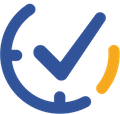No matter what kind of products or services your team delivers, measuring productivity accurately is crucial for success. Whether your team aims to increase sales, improve customer satisfaction, or streamline operations, finding the right methods to measure productivity will help you achieve your goals.
Why Measuring Productivity Matters
Imagine trying to improve a recipe without knowing which ingredients make it taste good. Measuring productivity is like understanding those key ingredients—without this knowledge, it’s challenging to enhance performance. Accurate productivity measurement helps you:
– Identify strengths and weaknesses
– Allocate resources more effectively
– Boost team morale by recognizing achievements
– Align activities with overall business goals
Find Your Key Performance Indicators (KPIs)
Before you can measure productivity, you need to know what success looks like. That’s where Key Performance Indicators (KPIs) come in. KPIs are specific metrics that reflect your team’s goals and the factors you can control. They provide a clear picture of what you’re aiming for and how close you are to achieving it.
Steps to Identify KPIs:
1. Align with Goals: Ensure your KPIs are directly tied to your team’s objectives.
2. Be Specific: Choose precise, measurable indicators rather than vague or broad metrics.
3. Consider All Factors: Include variables that could impact performance, such as external conditions or internal processes.

Top 5 Methods for Measuring Productivity
Here are five tried-and-tested methods to help you measure your team’s productivity accurately:
1. Management By Objectives (MBO)
Set specific long-term goals, break them into tasks, and measure productivity based on progress towards these goals. Regularly evaluate progress and focus on goal completion rather than time spent or tasks finished. For example, If your goal is to increase customer satisfaction, break it down into tasks like improving response times and enhancing service quality, then measure progress in these areas.
2. Quantitative Productivity Measurement
Measure productivity by the number of tasks completed within a set time frame (e.g., daily or monthly). Consider all relevant factors, such as training time, breaks, and task complexity. Assign specific KPIs to individual team members to track their output. For instance, In a manufacturing setting, track the number of units produced per day, accounting for downtime and setup times.
3. Profit-Based Productivity
Assess productivity by the profit generated relative to the salary and other expenses. Monitor revenue trends and ensure that increased profits align with productivity improvements. This method highlights the direct financial impact of your team’s efforts, providing a clear and quantifiable measure of success.
4. The 360-Degree Feedback Strategy
Collect feedback from all team members to evaluate individual contributions to the team’s goals. Ensure feedback is objective and focused on contributions, avoiding personal biases. You can use anonymous surveys to gather input on how effectively each team member supports group objectives and initiatives.
5. Use a Dedicated App
Utilize integrated productivity and collaboration tools to measure individual and team productivity. Choose apps that combine multiple functions to avoid information loss and streamline productivity tracking. Tools like Asana or Trello can track project progress, individual contributions, and overall productivity in real-time.
Building Trust and Transparency
Before implementing any productivity measurement method, build trust within your team. Clearly communicate the methods used and ensure everyone understands how their productivity will be measured. This transparency fosters a collaborative environment where everyone works towards common goals.
Steps to Build Trust:
– Communicate Clearly: Explain why measuring productivity is important and how it will benefit the team.
– Be Transparent: Share the methods and metrics used so everyone knows what to expect.
– Involve the Team: Get input from team members on the measurement process to foster a sense of ownership and cooperation.
Accurately measuring productivity is essential for achieving your team’s objectives. By selecting the right methods and fostering an open, communicative environment, you can ensure your team is productive and successful. Start by identifying your KPIs, choose the measurement methods that fit your goals, and maintain regular evaluations to stay on track.




